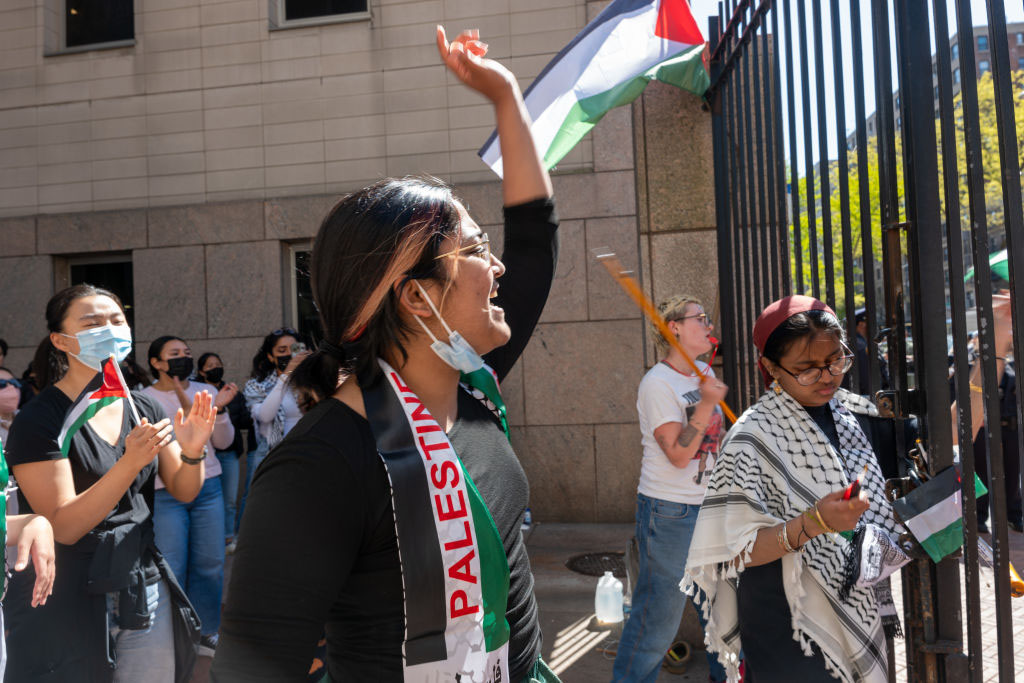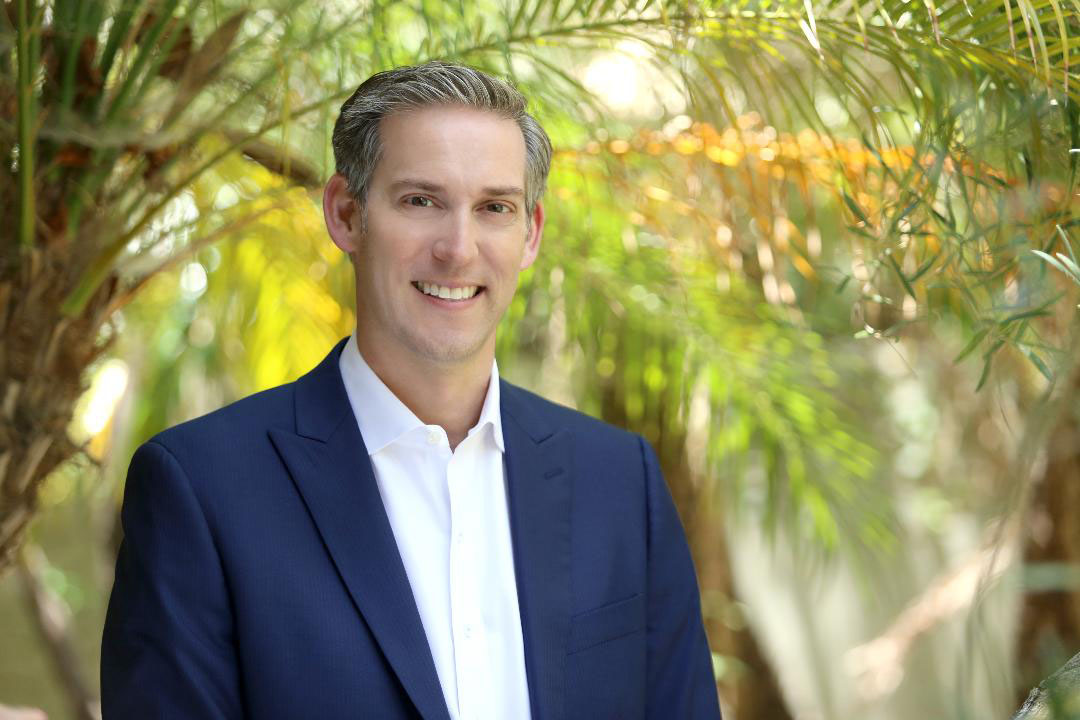 Photo by Carla Acevedo-Blumenkrantz
Photo by Carla Acevedo-Blumenkrantz “Where’s Adolf Perlmutter?” one of the German soldiers shouted, bursting into Suzanne Cohen’s house in Amsterdam in March 1943, rushing past a 15-year-old boy living there who was known as Avraham or Av.
Upstairs they found one of the Cohens’ sons, in his early 20s, and ordered, “You come with us.” On their way out, they grabbed Av, realizing he was the one they were looking for — his official name was Adolf — and led both young men into a police van. They headed to the Jewish Theatre, which had been converted to a detention center from where Jews were deported to camps.
“The moment I came in, I was thinking how to get out,” Av recalled. He noticed that pairs of German soldiers at the exits changed shifts regularly. At one door in particular, they actually abandoned their post to fetch their replacements. He mentioned this to the Cohen son, who deemed it too dangerous to try escaping. “They’ll shoot us,” he told Av.
Av was undeterred. In the middle of the night, when the exit was left unguarded, he calmly walked out and ran.
Avraham Abba Perlmutter, who was given the name Adolf by the Austrian government, was born on Aug. 28, 1927, in Vienna, to Chaim and Malka Perlmutter. His sister, Thea, was three years older.
Chaim owned a textile store, providing the family with a middle-class, very observant life. Every morning, Av prayed with his father in the small shul located on their apartment building’s first floor.
Av was a self-described “wild child.” At 6, he was asked not to return for a second year in Jewish school because of his misbehavior. He attended public school and played soccer with neighborhood boys.
Av’s life changed on March 12, 1938, with the annexation of Austria by Nazi Germany. Two days later, Av followed the crowds to one of Vienna’s main streets, where he witnessed Hitler riding by in an open car.
Av’s non-Jewish friends began beating him, and he no longer attended school. The following fall he enrolled in a Jewish middle school.
On the night of Nov. 9, 1938, Kristallnacht began. The Perlmutter family’s store was plundered.
Two months later, Av’s parents arranged for him and Thea to leave for the Netherlands on a Kindertransport — a rescue operation for children — to join Av’s aunt and uncle, Anni and Aby Bachrach. “It was like an adventure,” Av said.
They arrived in Wijk aan Zee, a village on the North Sea coast, where they spent two months at a Catholic campsite run by nuns before being transferred to a series of refugee camps. Then, in December 1939, after a bout with diphtheria, Av was released to Sientje and Joop Van Straten, relatives by marriage, who lived in The Hague, 40 miles south.
Thea, meanwhile, was transferred to a Youth Aliyah camp east of Amsterdam in Loosdrecht, with a plan to join her parents in Palestine, where they had immigrated illegally in June 1939.
Germany invaded the Netherlands on May 10, 1940. And while Av continued attending school, playing soccer and celebrating his bar mitzvah, anti-Jewish measures were enacted gradually.
On Oct. 7, 1942, after non-Dutch Jews were ordered to move from coastal areas, Av was sent to Amsterdam, where he was placed with Suzanne Cohen and her adult sons, within 2 miles of where Anne Frank and her family were already hiding. His relatives in The Hague were all murdered later in Auschwitz and Sobibor.
After Av escaped from the Jewish Theatre in March 1943, he ran back to the Cohens’ house, where he hid in the backyard.
The next morning, Ellie Waterman, a member of an underground organization founded by Dutch Christian Joop Westerweel, coincidentally showed up. “It was a pure miracle,” Av said. Thea had asked the group to find a hiding place for him.
“I was very Orthodox Jewish and I strongly believed that an angel of God was guarding me,” Av said.
Waterman told Av to meet him at the train station. After a series of stops and train changes, Av exited at what he believes was Zutphen, a city in the east-central Netherlands, where Waterman led him to the house of an elderly couple.
After dinner, as German soldiers approached, Av hid in a bedroom closet. As one of the soldiers approached, Av began hiccuping out of fear and nearly choked, smothering the noise. The German opened the closet door and slammed it, cursing. “Fortunately for me, he didn’t look very much,” Av said.
The couple then hid him in a backyard coal bin. But after the Germans returned a second time, Av left, not wanting to endanger the couple.
Despite the late hour, Av knocked on a nearby door. “I’m Jewish. Can you hide me?” he asked the young man who opened it. The man, who had a wife and small child, concealed him behind some boxes in the basement.
“I was very Orthodox Jewish and I strongly believed that an angel of God was guarding me”
“These Christians who were hiding Jews were extremely courageous, because if they were caught hiding a Jew, they were treated like a Jew,” Av said.
The next morning, Waterman found Av and arranged for Dutch Christians in several cities to hide him. Then, sometime during the summer, Av was placed in a boarding house in Rotterdam, where two boys were staying, as well as a teacher, who taught Av English and French.
One day in September 1943, the boys heard the familiar pounding of German boots and quickly hid in a prearranged spot. After the Germans left, they split up, believing they would be safer.
Av wandered for about 20 minutes before a German soldier stopped him, asking for identification and summoning a police van. He placed Av in the partitioned back, guarded by two Dutch police officers. Thinking the policemen might be anti-Nazi, Av slid toward the rear doors of the van as the police officers talked. Av partially opened one door and when the van slowed, he jumped out.
After running several blocks, he stopped a man on the street who took him home and contacted Joop Westerweel. An aide to Westerweel arranged for Av’s last placement.
Av traveled to Venlo, in the southeastern Netherlands, where a pastor, Henricus Vullinghs, met him at the train station and transported him on the back of his bicycle 5 miles north to the home in Grubbenvorst, a town within 3 miles of the German border where Peter and Gertrude Beijers lived with three of their six adult children.
Forty-two of the village’s 240 families, all Catholic, were hiding Jews. Pastor Vullinghs told his parishioners that they were assured a place in heaven if they saved a Jew.
As Av grew close to the Beijers family — he called the parents Mom and Pap — he began helping on the farm, becoming expert in growing asparagus.
After the Allies invaded Normandy in June 1944, they advanced toward Germany and by September were approaching Grubbenvorst.
When several German soldiers moved into the Beijers’ house, Av hid in the stable. Pap then built him a more secure hiding place, a concealed hole in the hill behind the barn. Av lay on his back all day, with red ants for companions, venturing out only in the evenings.
On Nov. 22, 1944, the Allies liberated the village of Sevenum, about 5 miles west of Grubbenvorst, launching a heavy barrage eastward toward the Germans’ defense line.
That night as Av joined the Beijers in their neighbors’ basement, the Germans forced everyone out, planning to evacuate all town residents across the Maas River to Germany.
Afraid of entering Germany, Av remained in Grubbenvorst, hiding once again in the stable. With British artillery shells exploding ever closer, he left, reaching the street just as a shell landed on the stable, demolishing it. Again, Av said, “I knew at the time that the angel of God was with me.”
As the pounding continued, Av crawled along toward the British line, feeling for mines. Suddenly someone shouted, “Halt,” as Nazi soldiers jumped out from the roadside. “Where are you going?” one demanded. Av pointed to a nearby house. Just then the British began firing, and Av pushed himself free and ran, despite the mines and the bullets flying past him.
He reached a farmhouse where he found the entire Beijers family. The bridge over the river had been destroyed, thwarting the Germans’ evacuation plans.
Two days later, Av persuaded one of Beijers’ sons to accompany him to Sevenum, now in Allied hands. They arrived on Nov. 26, 1944, which Av considers his liberation date. “I felt fantastic,” he said.
Wanting to help the British army, Av worked as an interpreter for a month as soldiers directed the locals in rebuilding the bridge. At Av’s request, one soldier sent a letter to his parents in Palestine. In January, the Jewish Brigade came for Av, to reunite him with his parents. Av said goodbye to the Beijers.
Years later, he submitted their names and that of Pastor Vullinghs to Yad Vashem, which recognized them in 1994 as “Righteous Among the Nations.” The Perlmutter and Beijers families have remained very close.
Av arrived in Haifa on July 16, 1945. Soon after his father picked him up, his aunt told him that his mother had died of an adverse penicillin reaction the previous January, two weeks before his letter arrived.
Weeks later, Av was living in Tel Aviv with his father and assisting in his small jam factory when they learned that Thea, who had been captured and sent to Auschwitz, had survived.
In 1947, Av joined the Haganah, the Jewish underground, but was badly injured in a motorcycle-truck collision. He was discharged as a wounded war veteran on Nov. 8, 1949, and made his way to the United States.
He entered the Georgia Institute of Technology in Atlanta in 1951 to study aeronautical engineering, graduating in June 1954. After earning a master’s degree at Princeton in 1956, he accepted a job at Kellett Aircraft Corp. in Philadelphia.
A year later, Av met Ruth Gitberg at a synagogue social. They married on Aug. 31, 1958, and had four children. He later earned a doctorate in mechanical engineering from the University of Pennsylvania.
Av and two colleagues at Kellett formed their own company, Dynasciences, in 1961. When Dynasciences merged with Whitaker Corp. in 1969, Av moved his family to Los Angeles and worked in engineering and other ventures until he retired in 2015.
Av is now 89 and the grandfather of five. He wrote an autobiography, “Determined,” which was published in 2014, and a Dutch version, in collaboration with the Beijers family, will be released this spring.
For 20 years, Av has been speaking about his experiences — at museums, schools and synagogues.
“I always like to tell my story in hopes that it helps others, especially children.” he said. “I tell them that regardless of difficulties, don’t give up.”






















 More news and opinions than at a Shabbat dinner, right in your inbox.
More news and opinions than at a Shabbat dinner, right in your inbox.